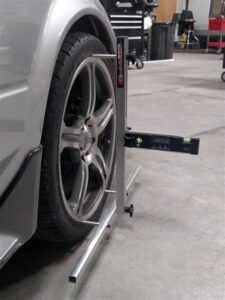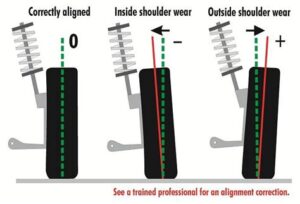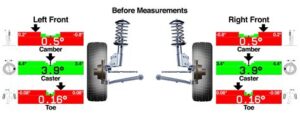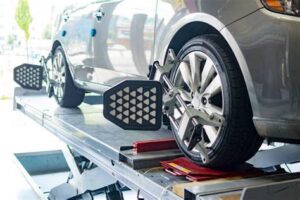Maintaining your vehicle’s alignment is crucial for ensuring a smooth ride and extending the life of your tires. As you navigate the open road, you may wonder: how often should you get an alignment for your car? This guide delves into the factors that influence alignment frequency, signs that suggest you may need an adjustment sooner than later, and the benefits of regular alignments. With insights from industry experts, we’ll help you determine the ideal schedule for your vehicle’s alignment needs. Whether you’re a seasoned driver or a new car owner, understanding alignment maintenance can enhance your driving experience and keep your car performing at its best. Let’s explore the essentials of car alignment to keep you safely and confidently on the road.
Understanding How Often Car Alignment Is Necessary
Maintaining proper car alignment is crucial for safe and efficient driving. Generally, it’s recommended to check your alignment how often based on specific intervals or after certain conditions are met. Experts typically suggest that you should get a wheel alignment performed every 6,000 to 10,000 miles, or once a year. However, this can vary depending on several factors including your driving habits, road conditions, and the type of vehicle.
In addition to adhering to a mileage schedule, there are other scenarios that warrant a more frequent alignment check. For instance, if you frequently drive on rough or uneven surfaces, encounter potholes, or have had recent suspension work or accidents, it is wise to monitor your alignment more closely. Regular inspections, even outside of the recommended intervals, can help identify alignment issues before they affect your vehicle’s performance or lead to premature tire wear.
Understanding how often to get your car aligned helps ensure that your vehicle handles well, tires wear evenly, and your overall driving experience remains safe.
Factors Influencing How Often You Should Get An Alignment
Understanding how often you should get a car alignment involves considering various factors that can affect the vehicle’s alignment. Here are some key aspects to take into account:
- Driving Conditions: If you frequently drive on rough roads or encounter potholes, your car may require alignments more often. Uneven surfaces can disrupt the suspension components, leading to misalignment.
- Driving Habits: Aggressive driving, such as hard braking and sharp turns, can increase the likelihood of misalignment. If this describes your driving style, consider more frequent alignments.
- Vehicle Age: Older vehicles, especially those with worn suspension parts, may need alignments more routinely as they are more susceptible to alignment issues.
- Tire Wear: Uneven or excessive tire wear can sometimes provide indicators regarding alignment issues. Regular inspections can help determine how often alignments are necessary based on tire condition.
- After Maintenance or Repairs: If you have recently replaced parts related to the wheel or suspension system, or if you’ve had bodywork done after a minor collision, it’s advisable to have an alignment check.
Taking these factors into consideration can help you determine how often to schedule an alignment for your vehicle, ensuring optimal performance and longevity.
Signs That Indicate You Need An Alignment More Often
Recognizing the signs that indicate your vehicle may require a realignment is crucial for maintaining optimal performance and safety. Here are some key indicators that you should pay attention to:
- Uneven Tire Wear: If you notice that your tires are wearing unevenly, it could be a clear sign that your alignment is off. Check the tread depth across all tires; if one side is significantly more worn, it’s time for an alignment.
- Steering Wheel Misalignment: If your steering wheel is off-center when you’re driving straight, this can indicate that your car needs an alignment. The vehicle should travel straight with the steering wheel in a neutral position.
- Pulling to One Side: If your car tends to pull to the left or right while driving, this can be a symptom of misalignment. You may find yourself constantly adjusting the steering wheel to keep it straight.
- Vibration in the Steering Wheel: A vibrating steering wheel can be another sign that you need a realignment. This vibration can also be associated with unbalanced tires but is worth noting in the context of alignment issues.
- Frequent Impact from Potholes or Curbs: If you often hit potholes or curbs, your vehicle is more susceptible to alignment issues. After such impacts, a realignment is often necessary.
Being aware of these signs can aid in determining how often you should have your vehicle aligned. Addressing alignment issues promptly not only enhances driving comfort but also extends the lifespan of your tires.
| Sign | Recommendation |
|---|---|
| Uneven Tire Wear | Check alignment immediately |
| Steering Wheel Misalignment | Get an alignment check |
| Pulling to One Side | Schedule alignment |
| Vibration in Steering Wheel | Investigate alignment issue |
| Frequent Impact from Potholes | Seek alignment post-impact |
Benefits Of Regular Car Alignment: How Often Is Ideal?
Maintaining proper alignment in your vehicle is crucial for both performance and safety. Regular car alignment ensures that your vehicle’s wheels are positioned correctly, resulting in several benefits. Here’s a detailed look at the advantages of routine alignments and some insights on how often you should schedule them.
1. Improved Tire Longevity: One of the main benefits of regular car alignment is the extended lifespan of your tires. When your wheels are aligned correctly, it reduces uneven tire wear, allowing you to get more miles out of your tires. This means fewer replacements and savings in the long run.
2. Enhanced Fuel Efficiency: Misaligned wheels can cause your engine to work harder, leading to decreased fuel efficiency. By ensuring that your wheels are aligned, you can optimize your vehicle’s performance and maximize fuel savings.
3. Better Handling and Safety: Proper alignment contributes significantly to your vehicle’s handling. When your wheels are aligned, your car will respond better to steering inputs, providing a smoother ride and enhancing overall safety. You’ll be less likely to experience issues like drifting or pulling to one side.
4. Cost-Effective Maintenance: Regularly inspecting and aligning your car can save you from costly repairs down the road. Many issues, such as premature tire wear and suspension problems, can be avoided with timely alignments, making it a wise investment.
As for the frequency of alignments, many experts recommend having your car’s alignment checked every 6,000 miles or at least once a year. However, this can vary based on driving habits, road conditions, and vehicle type. Therefore, it’s essential to evaluate your situation and consult a professional for personalized guidance on how often you should get an alignment for optimal performance.
Expert Recommendations On How Often To Schedule An Alignment
When considering how often you should schedule a car alignment, automotive experts generally recommend checking your alignment every 6,000 miles or every six months. However, it’s crucial to note that this can vary based on your driving habits and the condition of your vehicle.
Some key recommendations include the following:
| Driving Condition | Recommended Alignment Frequency |
|---|---|
| Regular city driving | Every 6,000 miles or 6 months |
| Frequent off-road driving | Every 3,000 miles or as needed |
| Long highway trips | After each trip or every 6 months |
| Vehicle experiencing suspension issues | Immediately upon noticing issues |
Additionally, it’s wise to follow your vehicle manufacturer’s recommendations in the owner’s manual for specific guidance on alignment schedules tailored to your vehicle type. Paying attention to signs of misalignment, such as uneven tire wear or a crooked steering wheel, can also be crucial for determining how often to seek alignment services.
Frequently Asked Questions
What is a car alignment?
A car alignment refers to the adjustment of the angles of the wheels to the manufacturer’s specifications. This helps ensure that the vehicle drives straight and reduces tire wear.
How often should I get my car aligned?
It is generally recommended to have your car aligned every 6,000 to 10,000 miles, or at least once a year. However, it may be necessary to check your alignment more frequently if you hit potholes or curbs.
What are the signs that my car needs an alignment?
Common signs that indicate your car needs an alignment include uneven tire wear, your vehicle pulling to one side, and a steering wheel that is off-center when driving straight.
Can I do a wheel alignment myself?
While some basic checks can be done at home, a proper wheel alignment typically requires specialized equipment and expertise, making it best to consult a professional mechanic.
Does getting a wheel alignment improve fuel efficiency?
Yes, a proper wheel alignment can improve fuel efficiency by ensuring that the tires are appropriately aligned to the road, reducing rolling resistance.
What can cause my car to be out of alignment?
Factors such as hitting a pothole, curbing your tires, frequent driving on rough roads, or wear and tear on suspension components can cause your car to fall out of alignment.
Are wheel alignments covered under warranty?
It depends on your vehicle’s warranty and the dealership. Some warranties include alignments as part of routine maintenance, while others may not.





